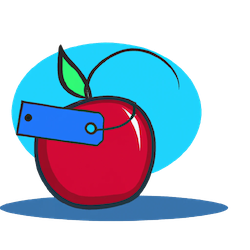In today’s increasingly digital world, it’s important for educators to teach children about financial literacy and money management from a young age. With the rise of mobile devices and apps, there are now a variety of resources available to help teach kids about personal finance in a fun and interactive way. In this blog post, we’ll explore the benefits of using financial apps in the classroom and highlight some of the best apps to use with your students.
The Importance of Teaching Financial Literacy
Financial literacy is the understanding and knowledge of financial concepts and skills necessary to make informed and effective decisions about money. It’s a crucial life skill that all students need in order to be successful in managing their personal finances as adults. According to a report by the Organisation for Economic Co-operation and Development (OECD), only 15% of 15-year-old students in the United States have basic financial literacy skills.
By incorporating financial literacy into the curriculum, educators can help bridge this gap and prepare students for their financial futures. And with the availability of financial apps for kids, it’s easier than ever to make learning about money management engaging and interactive.
The Benefits of Using Financial Apps in the Classroom
- Hands-on learning: Financial apps provide a hands-on learning experience for students. Instead of just reading about financial concepts, students can actively engage with the material and apply it in real-life scenarios.
- Engaging and interactive: The use of apps in the classroom can make learning about money management more engaging and interactive for kids. They can track their progress, earn rewards, and compete with classmates, making the learning experience more enjoyable.
- Personalized learning: Financial apps can cater to the individual needs of each student. They can choose the topics they want to focus on and work at their own pace.
- Real-time feedback: With financial apps, students can receive real-time feedback on their progress and identify areas where they may need more practice.
Top Financial Apps for Kids
Here are some of the best financial apps for kids that you can use in the classroom:
- PiggyBot: This app is designed for younger kids and teaches them the concept of budgeting and saving their money. Kids can set goals and allocate their allowance towards different categories like saving, spending, and sharing. They can also track their progress and receive messages of encouragement.
- Bankaroo: This app is targeted towards older kids and allows them to create virtual banks and manage their accounts. They can set savings goals, track their spending, and learn about the basics of banking.
- Kidfund: This app not only teaches kids about money management, but also about giving back. Kids can set up a savings account and learn about charitable donations by choosing from a list of charities and causes to which they can donate their money.
Reflective Questions for Educators
- How can you incorporate financial apps into your curriculum to make learning about money management more engaging for students?
- What are some potential challenges or barriers to using financial apps in the classroom, and how can you overcome them?
- How can you encourage parents to download and use these apps at home with their children to reinforce financial concepts?
Conclusion
Incorporating financial apps into the classroom is a great way to teach kids about money management in a fun and interactive way. These apps provide a hands-on learning experience, can be personalized to cater to individual student needs, and offer real-time feedback. By introducing these apps to your students, you can help prepare them for their financial future and ensure that they have the necessary skills to make informed decisions about money.
Which of these financial apps for kids will you be incorporating into your curriculum? Share your thoughts with us in the comments below!
